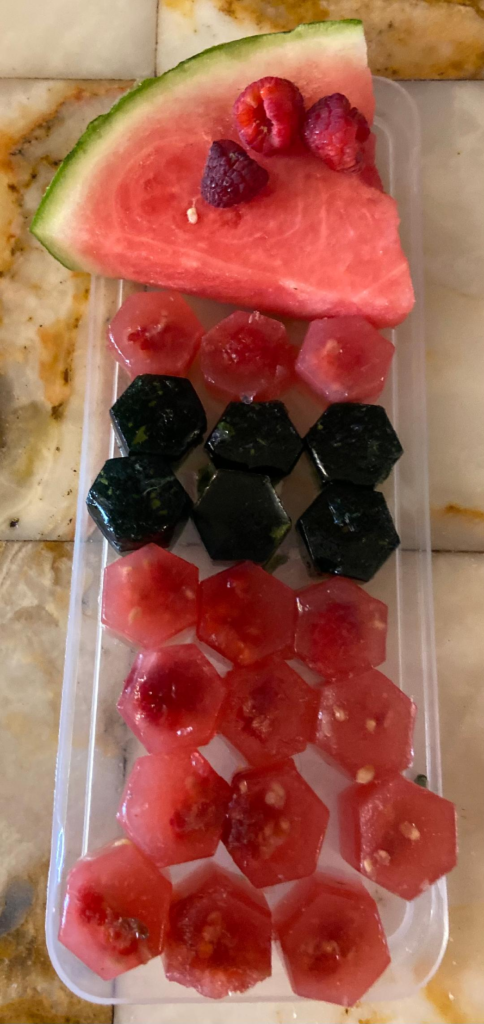The Big C-Word
Another article from Dr. Robert Berger.
Some Mainstream Causes of Canine Cancer, by Robert Berger, MS, MVSc, Ph.D.
Cancer cells are present in most of us at sometime in our lives. For both human and animals (in this case, our canine companions), the odds of us not at least having pre-cancerous or fully intact cancer cells found somewhere in our bodies at any given time are fairly slim.
The best way to lower the chances and inhibit the onset of cancer (and stop it from becoming a full-blown malignancy), is to possess a well-functioning, powerful immune system. A strong immune system will enable the body to recognize, isolate, and destroy cells in the body that are foreign and potentially dangerous which obviously includes cells that are pre-cancerous or are cancer cells themselves.
If cancer is considered an epidemic in humans, it is even more so that in our canine companions. If one is to look at the history of cancer in dogs, you can be assured that it claims about one out of every three; around 33% or higher. Dogs that live to seven years or older have about a 50% chance of being diagnosed with cancer with some breeds showing an even higher incidence. Full breeds, and even some such as Golden Retrievers (where about 60% of this breed alone will die of cancer), have an even greater chance. Yet, according to the American Cancer Society, for the entire canine population, only 10-15% of cancers are due to genetics. The other 85-90% is due to many other factors, especially environmental and dietary ones.
Remember that dogs live their lives lower to the ground than humans do. This means that they are more subject to the effects of toxins and chemicals that are heavier than air and fall to the ground. Then they breath these toxins and chemicals in or absorb them through their skin.
Prime examples of the above are cigarette smoke, industrial fumes, car exhaust, and even smog. As much as humans are negatively affected by these toxins and chemicals, dogs are even more so affected by them.
Also remember that dogs are covered with fur/hair which attracts and holds onto airborne toxins and waste products many times stronger than would skin alone. Another fact to note is that dogs don’t sweat through their skin (they do so through their lungs/mouths…why they pant).
This means that many toxins have to be “panted” or “exhaled” out before or after metabolized by the liver. The panting and exhaling of these toxins can (and do) take a toll on the dog’s health over time, and will affect the lungs, esophagus, nasal passages, and all areas of the mouth, (i.e., tongue and gums).
This article is not about whether one believes in the use of traditional vaccinations for your furry friend, as that decision is entirely up to the owner (s). What has been shown to be a health issue when using injectable vaccines is something named ” Vaccine Induced Carcinoma” or ” Vaccine Associated Sarcoma”.
This is where lesions can form or develop in the area, (or at the point), of the injection site on the dog’s body.
There are a number of varying components in different types of vaccines….depending on the type of vaccine, of course. These are, the make up of the vaccine itself as well as the carrier solvent or solution. One type of solvent used may contain formaldehyde, for instance. Formaldehyde is a known carcinogen, (we know it as embalming fluid), and can make up part of the vaccine itself, as it can reduce an antigen’s strength to cause simple antibody production, or be just a constituent of the liquid transport substance. Regardless, the presence of formaldehyde at the injection site can cause inflammation and lesion development over time. These lesions can develop into specific types of tumors that can be highly invasive (i.e., cancerous), and spread rapidly to a pet’s lymph nodes and/or lungs.
Although the above concept is on the same lines of thought, the same can be said about tick, flea and anti-parasite medications which will be discussed in future articles.
There are numerous types of meat products (found either as part of a food or as the sole constituent), that because of the nature of how a “food-source” animal is fed or raised (i.e., certain types of livestock), may have elevated levels of steroids in their systems. These animals may have been given steroids to either increase size or to combat inflammation/infection, or (in many cases), produced and secreted an extreme amount of steroids (i.e., due to fear), just prior to slaughter. These steroids, whether they be anabolic or anti-inflammatory (such as a corticosteroid), can do harm to a dog if present in his/her food over a period of time. These steroids, when present, have been linked to specific cancers in dogs.
Many dog foods or diets have an abundant amount of fat in them.
Depending on the amount of fat/fatty acid concentration (to be discussed in detail in future articles), fat not only causes unwanted weight gain of non-functional tissue (fat), but also holds many dangerous fat-soluble toxins in the body. When these toxins are released from fat they enter the circulation and get embedded in body tissues. Again, many are carcinogens and/or co-carcinogens and are causative factors for cancer….especially in our pets!
Future articles will focus on the effects of excess carbohydrates and simple sugars in many dog foods and how these are related to cancer development in our canine companions.
All reactions:
11
Watermelon/Raspberry Gummies

Gummy Squares:
In these recipes we use pasture fed Beef Gelatin, however pork gelatin works well also. Chicken Gelatin is different, it takes more gelatin to gel. Chicken gelatin mostly comes from Taiwan
Watermelon/Raspberries Gummy
Ingredients
2 cups of seeded red or orange watermelon.
3/4 cup of cold filtered water
1 cup of filtered water
10 organic raspberries (or more)
1 tsp of ground ginger (optional)
1/3rd cup of grassfed gelatin
Directions:
Add gelatin to 3/4th cup of cold water and let bloom (dissolve). In a saucepan, heat 1 cup of filtered water. Place watermelon & ginger in processor and process until smooth. Add the pureed watermelon to the heated water then add the “bloomed” gelatin and let gelatin dissolve. If using molds or ice trays place 1 raspberry into each individual mold or into icetrays then pour or spoon gelatin mixture into the molds (or icetray). If using a bowl put all raspberries in bowl and pour heated melon gelatin mixture over raspberries. Refrigerate for about 2 to 3 hours. Will last about 5 days.
Use same technique for Cantaloupe/Blackberry Gummy
Good Veggie List (Modern Dog Magazine)

Fruits and Veggies that are safe for dogs to eat
By Gayle Pruitt
Good Veggies
Acorn Squash (all Winter Squash + Pumpkin)
Alfalfa Sprouts (small amount)
Asparagus
Beets
Bell Pepper (all colors)
Broccoli
Carrots
Cabbage
Collards
Cauliflower
Green Beans (lightly cooked)
Kale
Lettuces (not iceberg hard to digest)
Spinach
Sweet potatoes
Summer Squash (yellow & Zucchini)
Good fruits
Melons
Coconut
Cranberries
Berries (fresh and frozen): Blueberries, blackberries, strawberries Raspberries —
Bananas
Apple (not seeds)
For awesome, healthy recipes your dog will love incorporating many of the above fruits and veggies, check out the terrific cookbook Dog-Gone Good Cuisine by Gayle Pruitt
The Lowly Gelatin Is a Power House of Goodness
by Gayle Pruitt,CN
When thinking of a super food, you would probably not entertain the idea of eating plain ole gelatin, and certainly not for feeding your growing pups or discerning hounds. But the evidence is clear – gelatin is a great food for all of us, both Human and Canine.
Did you know that Beef Gelatin-protein is rich in the amino acids found in collagen, including L-proline, L-hydroxyproline, and glycine? It is so easy to digest and contains no fat, cholesterol or carbohydrates. And gelatin helps boost you and your pup’s immune systems.
Glycine helps build muscle and converts glucose to energy rather than fat. Glycine helps restore damaged tissue, helps rebuild gut tissue, helps absorb calcium more efficiently, and may help heal ulcers.
Gelatin helps with muscle growth and metabolism and keeps skin smooth and hair shiny. It is great for the bones because of the high concentrations of proline and glycoprotein. For the athletic dog, gelatin is an anti-inflammatory which helps with joint pain and possibly with joint regeneration.

Rainbow Chard Stems for Dogs….and humans?
Why in the world would I feed chard & chard stems to dogs? Well for many reasons.
- You don’t have to throw the stems away (saves on trash)
- They taste great lightly sautéed or for dogs you may puree them.
- The chard itself is wonderful for humans & dogs and helps with blood pressure, boosts immune system, and it is packed with nutrients, yet low in calories, high in iron, potassium, magnesium and vitamins K, C and some A. Chard has antioxidants, including quercetin, kaempferol, rutin, and vitexin
- The biggie with Swiss chard STEMS are they are loaded with glutamine an amino acid that is usually found in animal proteins. However, Swiss chard stems has a goodly supply. Great for gut health!
Give Chard a try. We like Rainbow Chard at the Pruitt house, we are all about color.
Chard is on lists for high oxalates. Humans & dogs with a tendency for kidney stones, please check with your and your dog’s healthcare provider before eating.

- 1
- 2

